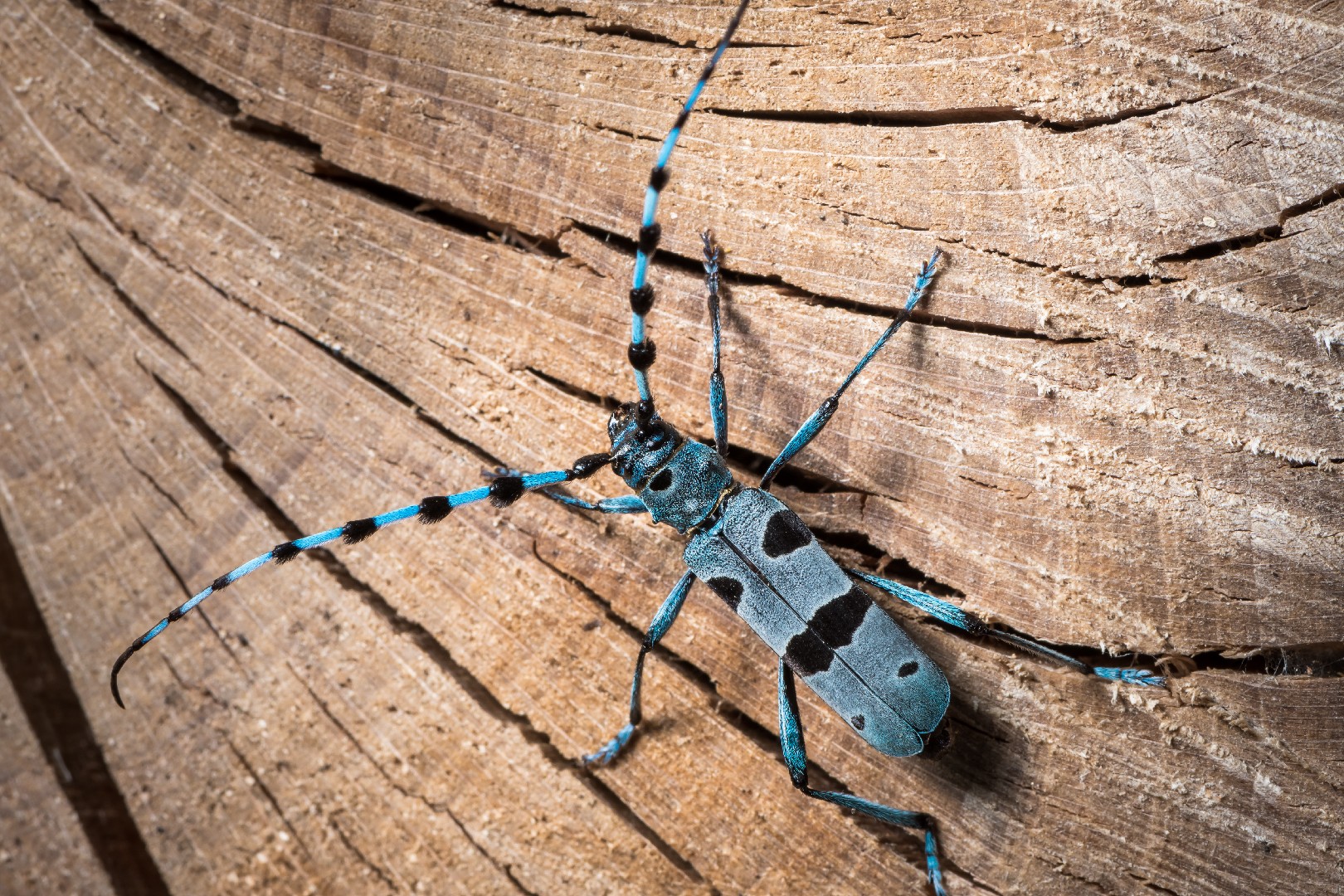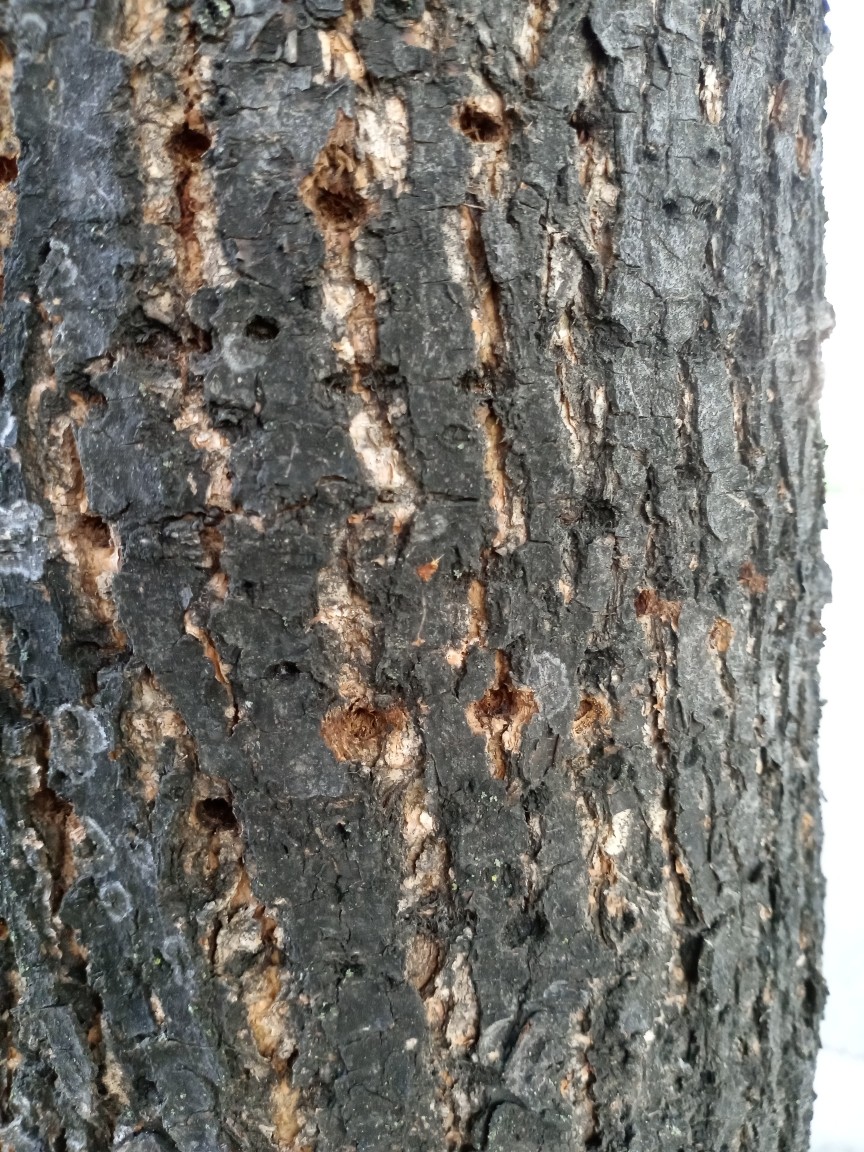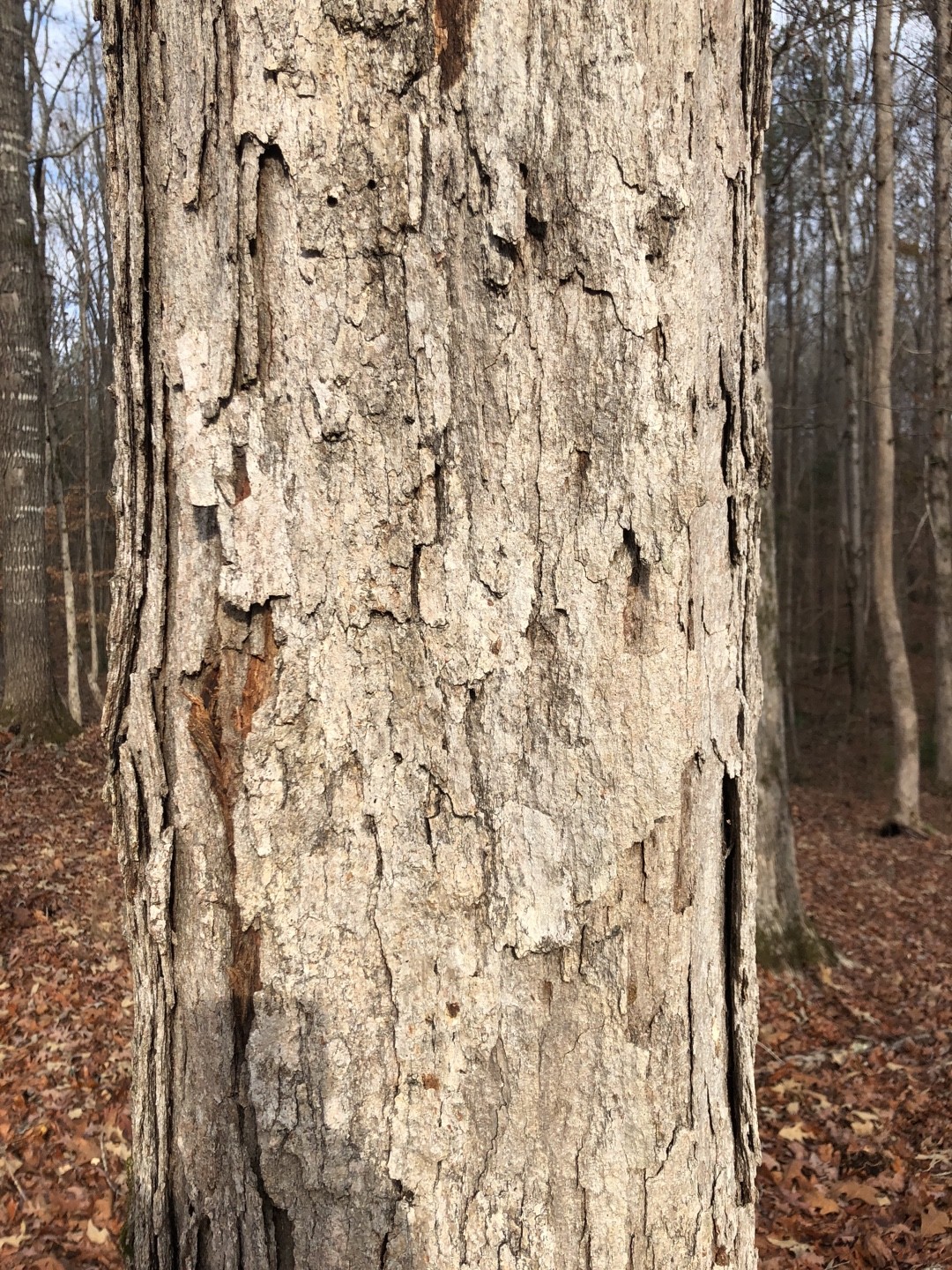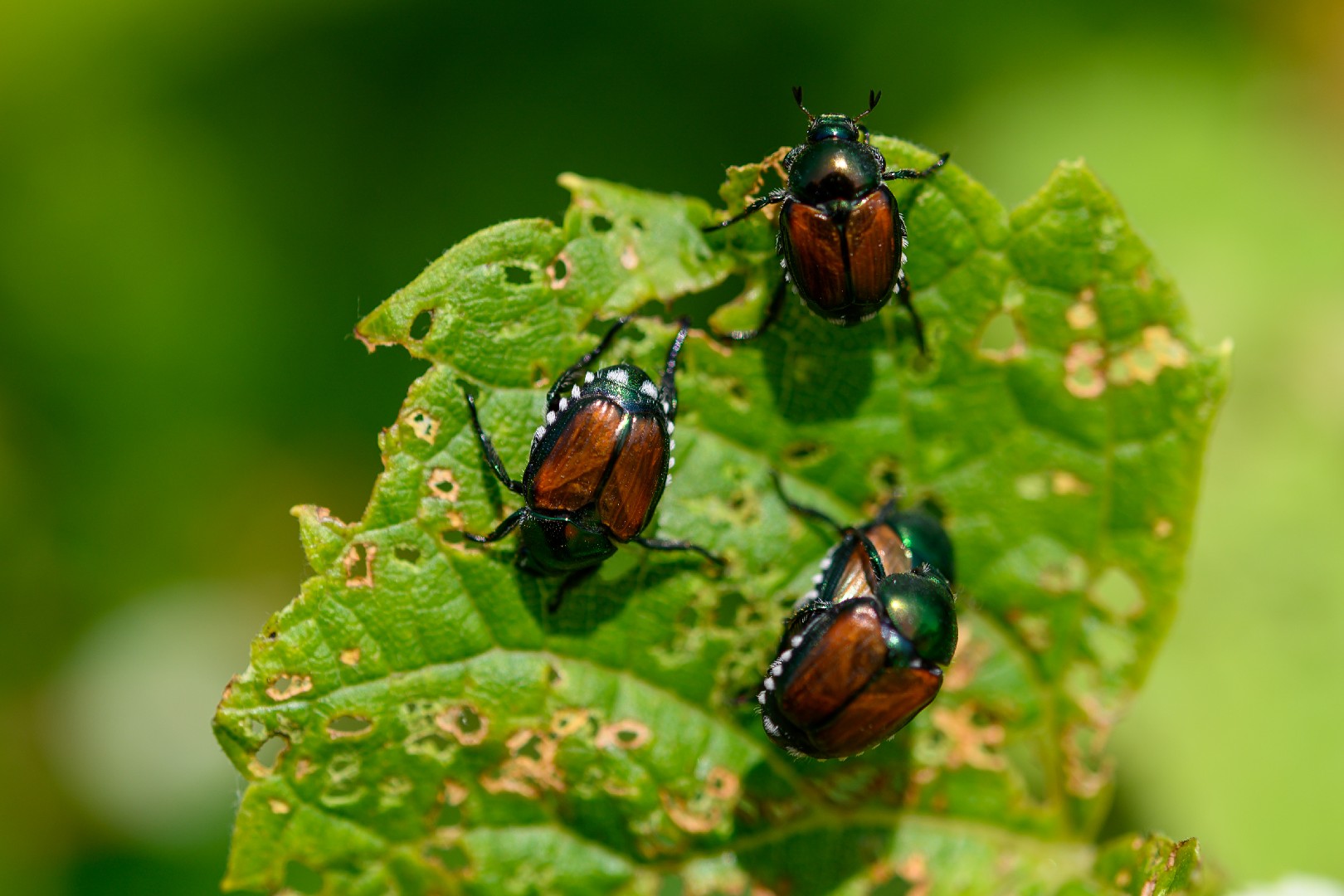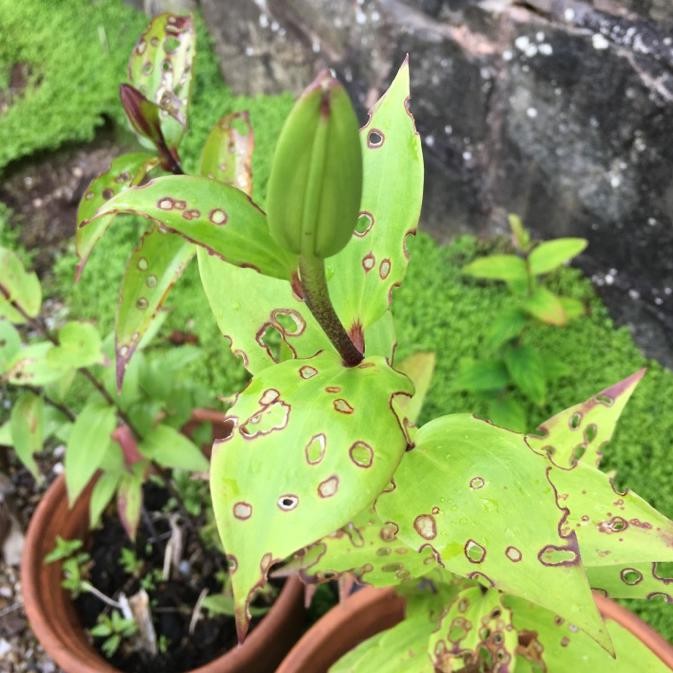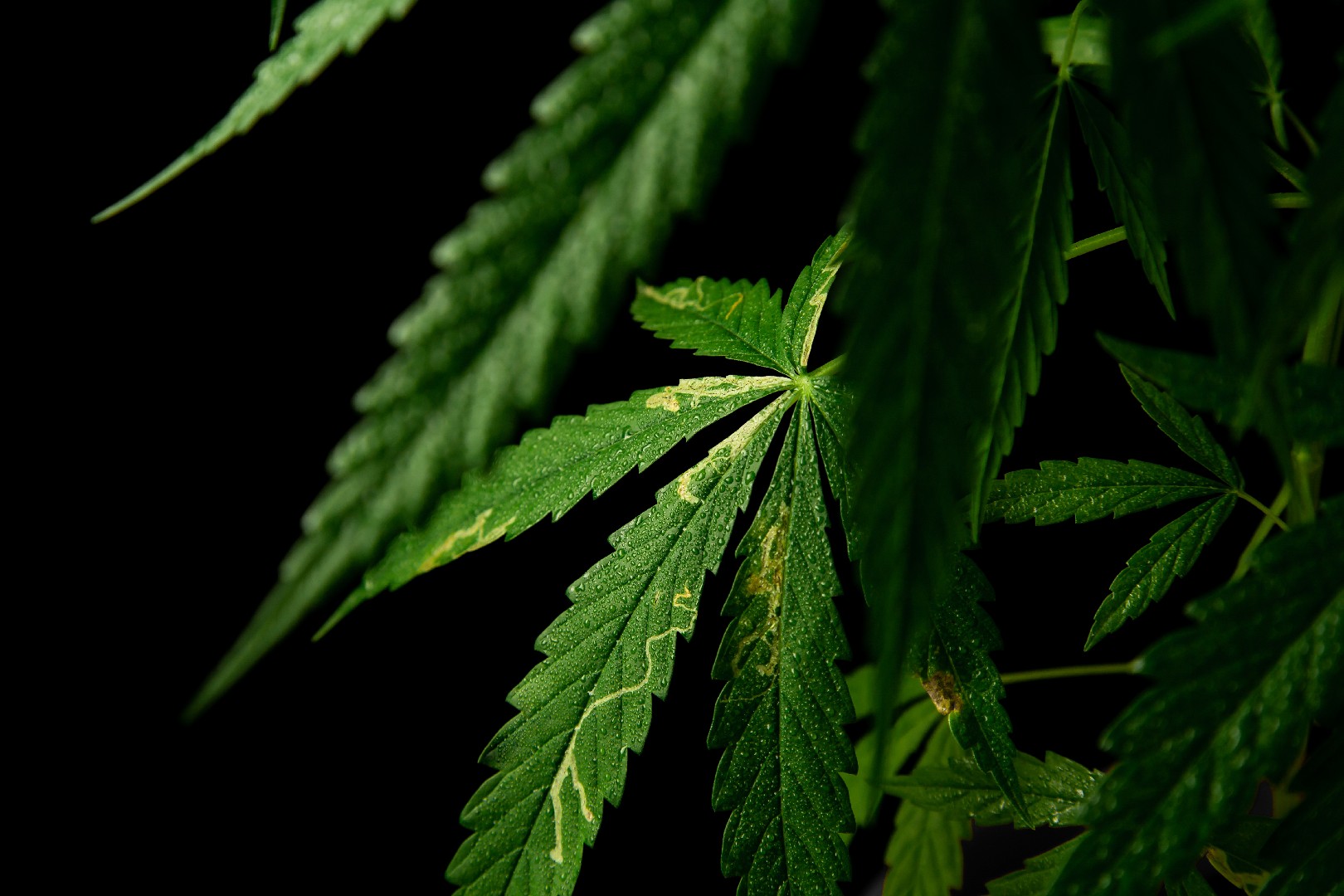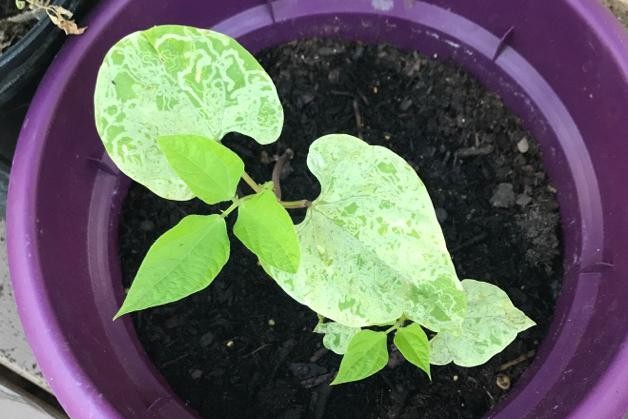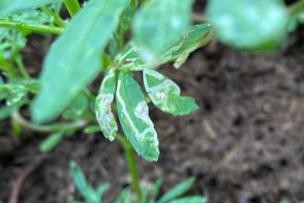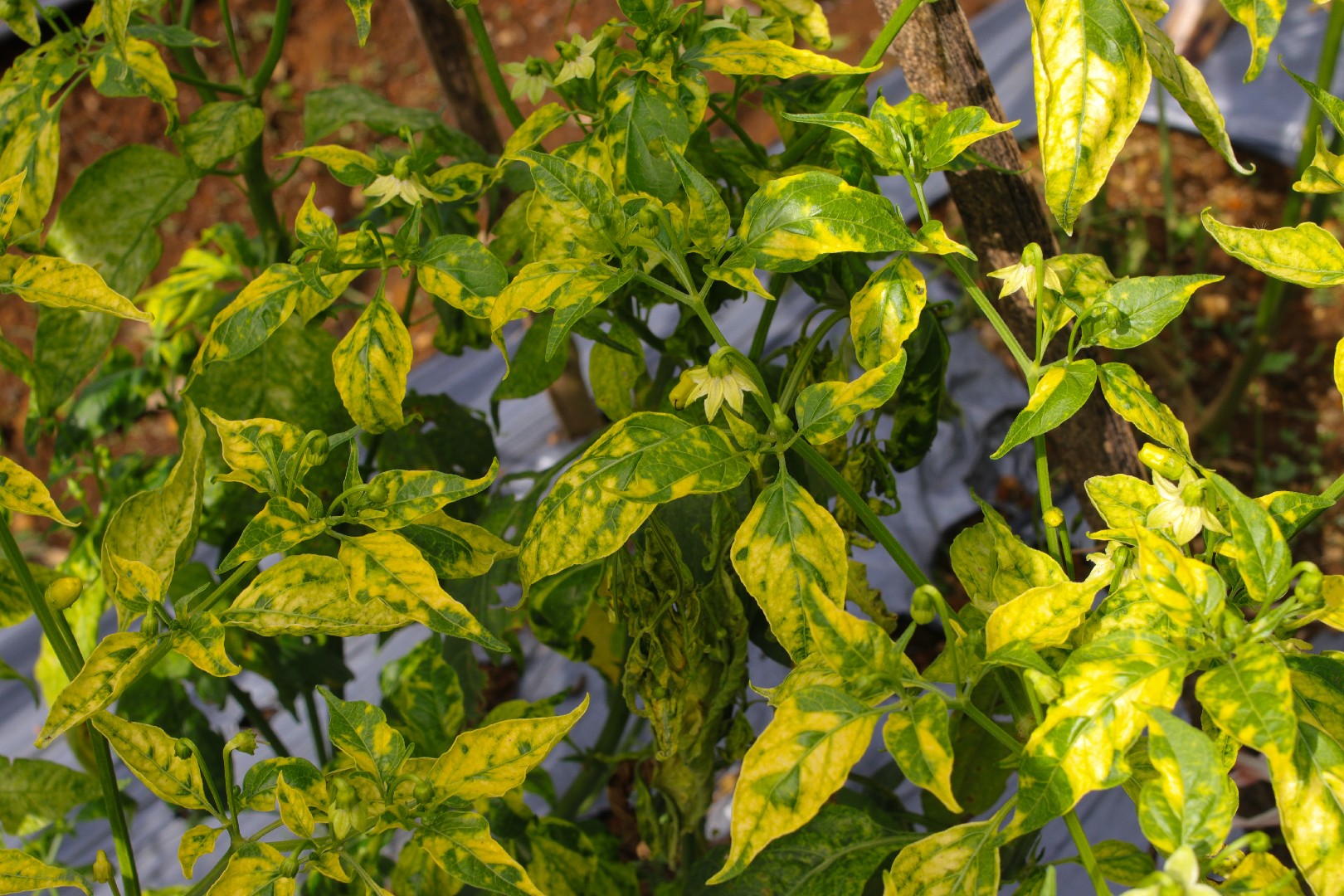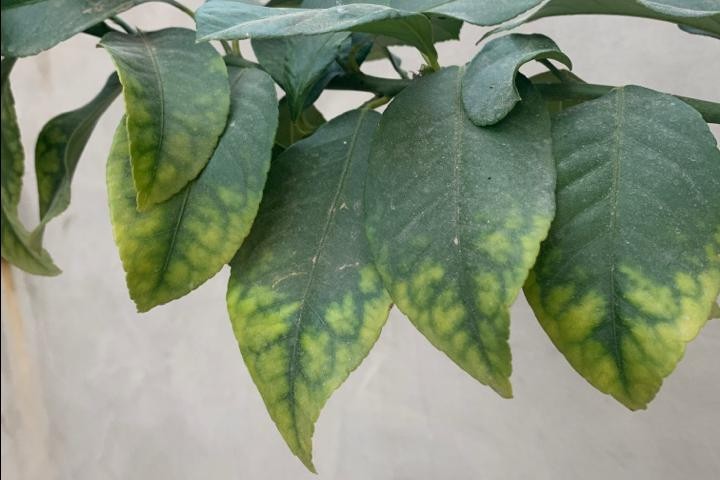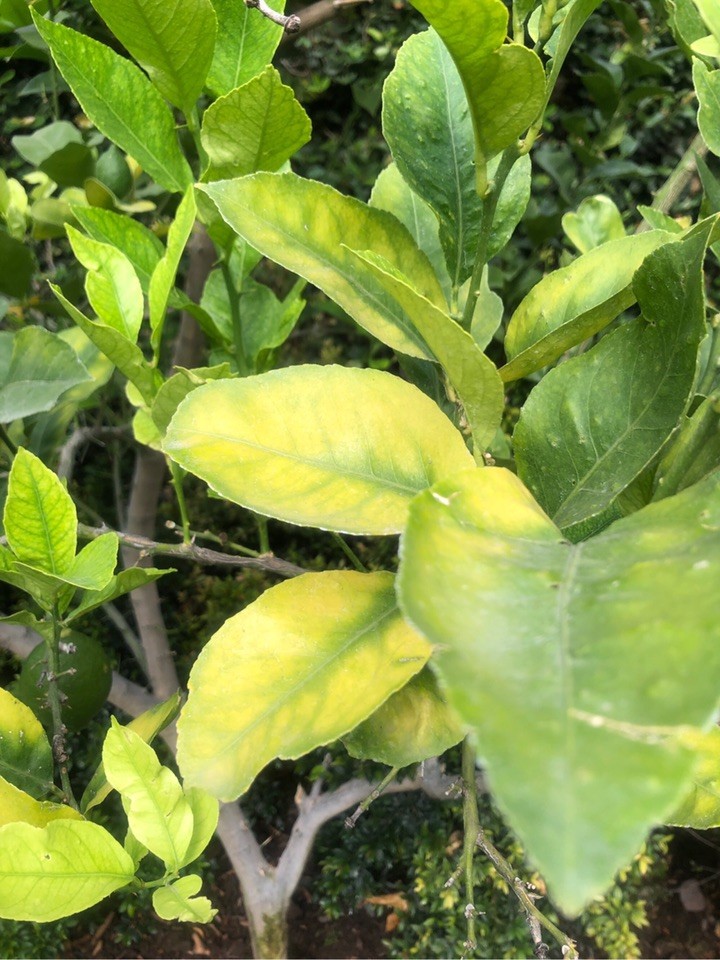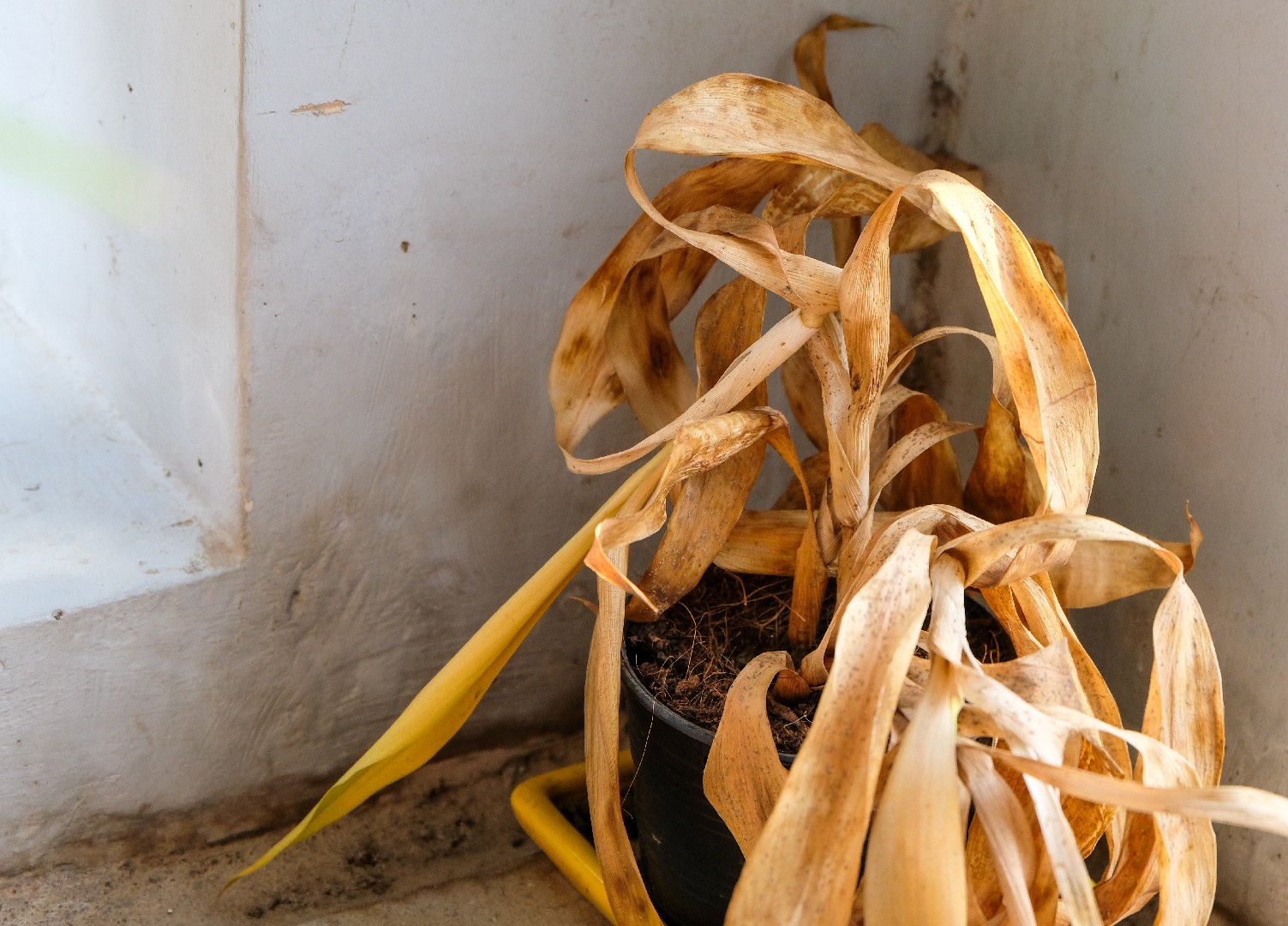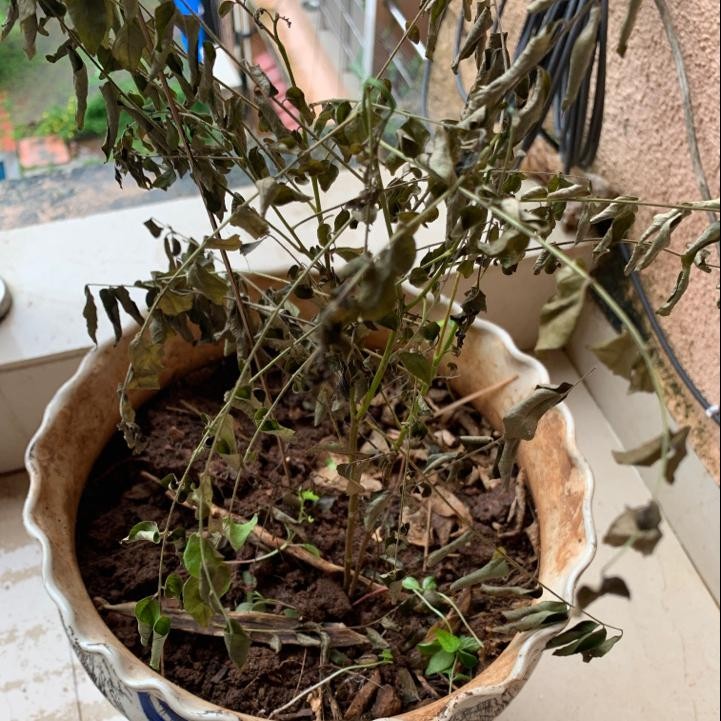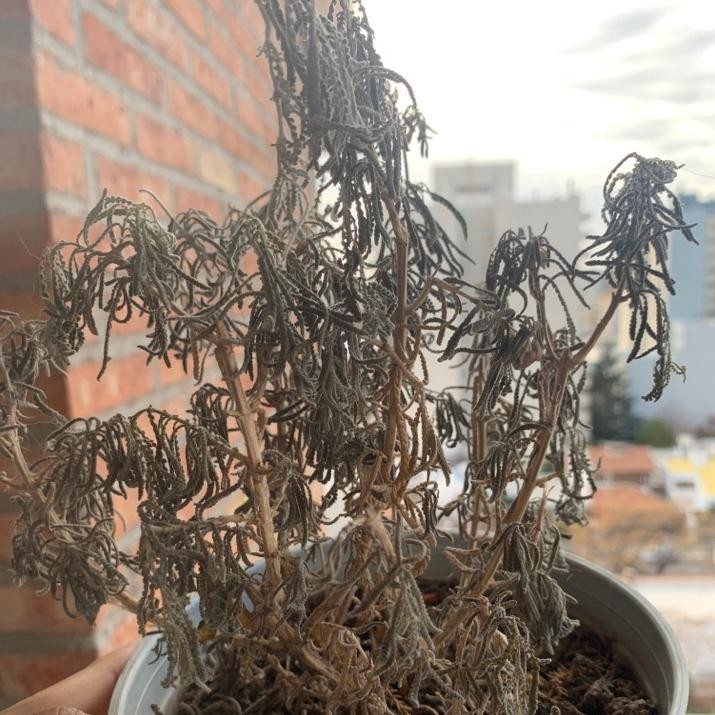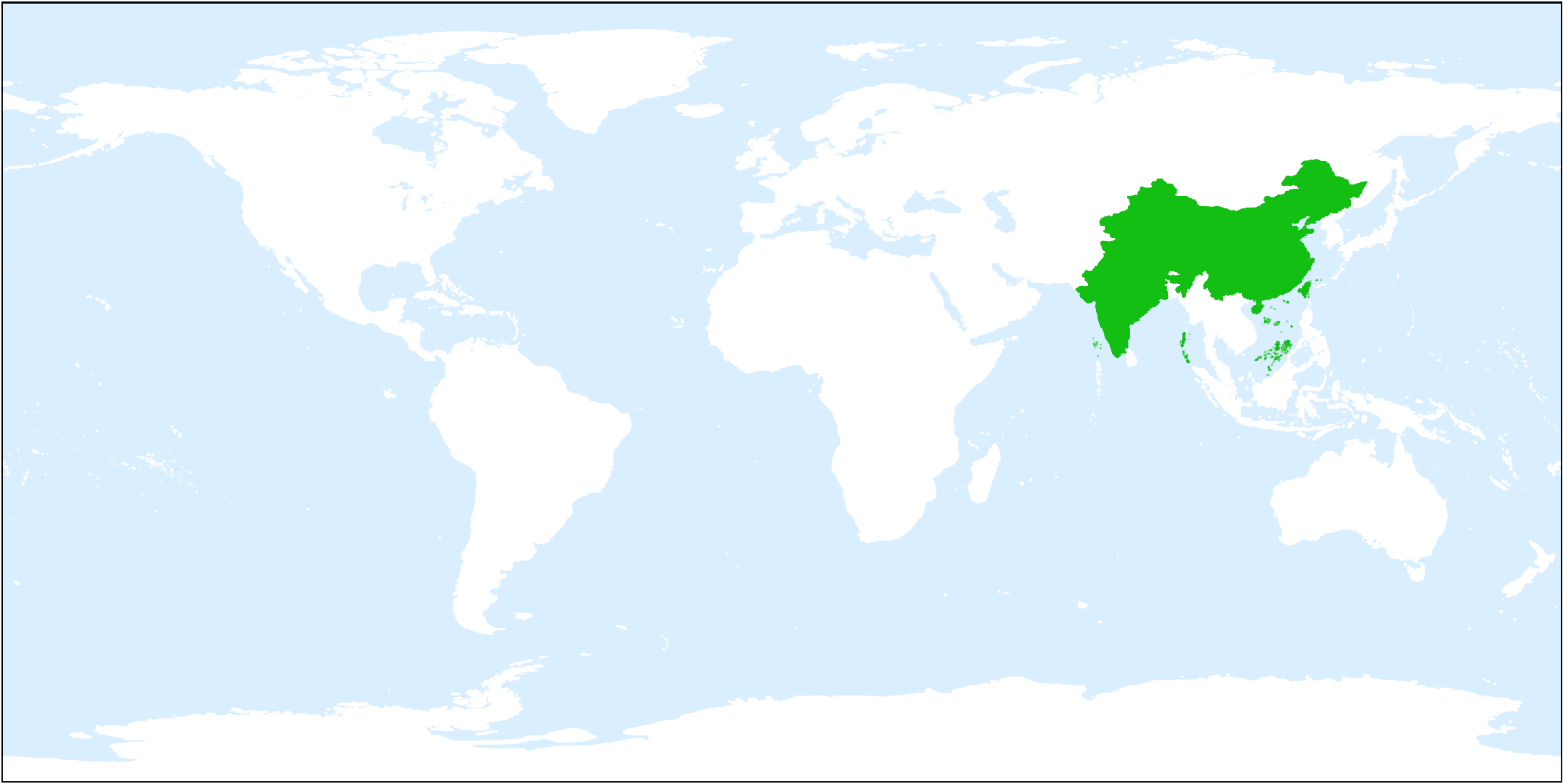![icon]()
Plant disease auto-diagnose & prevention
AI-powered plant doctor helps you diagnose plant problems in seconds.
Download the App for Free
Longhorn beetles
The longhorn beetle is a medium- to large-sized insect with very long antennae and strong jaws. Both its adult and larval stages gnaw on tree trunks, leaving small, round holes.
Solutions: Some longhorn beetles species are native insects, and they cause little damage. Therefore, these don't warrant control. Other longhorn beetles species are invasive pests that were recently introduced from other areas. These species can cause a great deal of damage to hardwood trees. Apply an insecticide containing imidacloprid as a soil injection or trunk injection following product instructions. This will enter into new grow and kill adults who feed on foliage. This will not help save trees that are already infested with large amounts of larvae, but it will save trees located near an infested tree. Contact an arborist for best control practices regarding infected trees. To properly control longhorn beetles, all host plants in a given area must be treated. Contact a local extension agent or state agency. Tracking the spread of longhorn beetles is a key component of their control.
Learn More About the Longhorn beetles
![more]()
Leaf beetles
Leaf beetles are a class of colored insects 1 to 2 cm in size. They gnaw on leaves and petals resulting in small, round holes scattered over the surface.
Solutions: For less serious cases: Remove beetles, nymphs, and eggs. Remove all life stages of the beetles and kill them by placing them in a bucket of warm, soapy water. This can be done more easily by placing the bucket under affected leaves and shaking the plant. This method is most effective in the afternoon when leaf beetles are more active. Always dispose of insects in a sealed bag or container to avoid escape and spread. To treat more serious infestations: Apply organic insecticides. Use naturally-derived insecticides before moving on to synthetic insecticides. Neem oil and pyrethrum are naturally-derived insecticides that should be applied following label instructions. Apply synthetic insecticides. Examples of insecticides effective for leaf beetles include carbaryl, permethrin, and bifenthrin. Apply insecticides according to label instructions.
Learn More About the Leaf beetles
![more]()
Leaf miners
Leaf miners scar the leaves with curved white streaks or rounded white spots with brown centers.
Solutions: Leaf miners, although relatively harmless at first, can quickly multiply and devastate your plants in the coming weeks. For severe cases: Spray an organic insecticide. For an organic solution, spray a diluted mixture of azadirachtin, a compound derived from neem seeds, above and below leaves. Spray a synthetic insecticide. Spray a product that contains spinosad, such as Entrust, making sure to cover all sides of the leaves. Introduce beneficial insects. Introduce beneficial insects that eat leaf miners, such as parasitic wasps or Syrphid flies. For less severe cases: Prune infected tissue. Remove and dispose of leaves that have any sign of leaf miner damage.
Learn More About the Leaf miners
![more]()
Nutrient deficiencies
A lack of nutrients will cause a widespread yellowing of the leaves. The yellowing may begin at the base or top of the plant.
Solutions: There are several easy ways to remedy the nutrient deficiencies in soils. Use a water-soluble fertilizer. Fertilizers will include most or all of the macro and micro-nutrients the plants need to thrive. Adding some fertilizer to the soil will make those nutrients available and can combat deficiencies. Regularly apply organic fertilizer pellets. Organic fertilizers such as animal manures and bonemeal can supply plants with all the nutrients that they need to grow strong and healthy. Apply compost. Though not as finely tuned as artificial fertilizer, compost can nevertheless be rich in important nutrients and should be applied to the soil regularly. Apply nutrients via foliar application. In addition to supplementing the soil with nutrients, foliar fertilizer can be applied directly to the plant's leaves. Nutrients offered via foliar application are often taken up even quicker than those put in the soil, so the foliar application can be great for swiftly addressing specific deficiencies.
Learn More About the Nutrient deficiencies
![more]()
Plant dried up
The entire plant may dry out due to dieback or normal seasonal dormancy.
Solutions: The solution for a dried out plant depends on the cause, so determine the cause before selecting a treatment method. Adjust your watering: Stick your finger in the soil near the roots. If it feels bone dry or overly saturated, you need to adjust your watering frequency accordingly. Prune back dead foliage: Snip off any brown stems and leaves on the plant to make space for new growth. This encourages the roots to send up fresh stems. Move to a proper environment. This may involve decreasing or increasing sun exposure, depending on the species. Decrease fertilizer applications. If you have applied too much fertilizer, you can repot plants with fresh potting soil. Wait. If your plant has dried out as daylight is decreasing, it is entering dormancy. Decrease watering and wait until the plant resumes growth.
Learn More About the Plant dried up
![more]()






